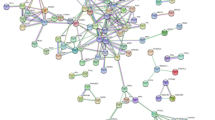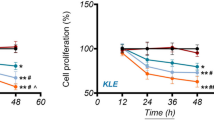Abstract
Li-Ru-Kang (LRK) has been commonly used in the treatment of hyperplasia of mammary gland (HMG) as a cipher prescription and achieved obvious therapeutic effects. However, the bioactive compounds and underlying pharmacological mechanisms remain unclear. This study aims to decipher the bioactive compounds and potential action mechanisms of LRK in the treatment of HMG using an integrated pharmacology approach. The ingredients of LRK and the corresponding drug targets were retrieved through drug target databases and were used to construct the “compound–target–disease” network and function–pathway network. Ultimately, 89 compounds and 2150 drug targets were collected. Gene ontology enrichment analysis revealed that mammary gland alveolus development and mammary gland lobule development were the key biological processes and were regulated simultaneously by three direct targets, including androgen receptor (AR), estrogen receptor (ER) and cyclin-D1. Moreover, 14 compounds of LRK were directly involved in the regulation of the three aforementioned targets. KEGG pathway enrichment analysis found that five signaling pathways and seven direct targets were closely related with HMG treatment by LRK. The results of animal experiments showed that LRK significantly improved the histopathological status of HMG in rats. Additionally, LRK markedly regulated the protein expressions of AR, cyclin-D1, MMP2, MMP3 and MMP9. But interestingly, the effect of LRK on ER was not obvious. This study demonstrated that LRK exerted its therapeutic efficacy based on multi-components, multi-targets and multi-pathways. This research confirms the advantages of network pharmacology analyses and the necessity for experimental verification.









Similar content being viewed by others
References
Ahmed S, Khan H, Fratantonio D, Hasan MM, Sharifi S, Fathi N, Ullah H, Rastrelli L (2019) Apoptosis induced by luteolin in breast cancer: mechanistic and therapeutic perspectives. Phytomedicine 59:152883
Chen CY (2011) TCM Database@Taiwan: the world’s largest traditional Chinese medicine database for drug screening in silico. PLoS One 6(1):e15939
Chen T, Li J, Chen J, Song H, Yang C (2015) Anti-hyperplasia effects of Rosa rugosa polyphenols in rats with hyperplasia of mammary gland. Environ Toxicol Pharmacol 39(2):990–996
Chen J, Zhou J, Li F, Zhu Y, Zhang W, Yu X (2017) Delphinidin induces autophagy in HER-2+ breast cancer cells via inhibition of AKT/mTOR pathway. Zhong Nan Da Xue Xue Bao Yi Xue Ban 42(3):264–270
Cotrim CZ, Fabris V, Doria ML, Lindberg K, Gustafsson JÅ, Amado F, Lanari C, Helguero LA (2013) Estrogen receptor beta growth-inhibitory effects are repressed through activation of MAPK and PI3K signalling in mammary epithelial and breast cancer cells. Oncogene 32(19):2390–2402
Foote MR, Giesy SL, Bernal-Santos G, Bauman DE, Boisclair YR (2010) t10, c12-CLA decreases adiposity in peripubertal mice without dose-related detrimental effects on mammary development, inflammation status, and metabolism. Am J Physiol Regul Integr Comp Physiol 299(6):R1521–R1528
Hong M, Li S, Tan HY, Cheung F, Wang N, Huang J, Feng Y (2017) A network-based pharmacology study of the herb-induced liver injury potential of traditional hepatoprotective Chinese herbal medicines. Molecules 22(4):632
Hu S, Huang L, Meng L, Sun H, Zhang W, Xu Y (2015) Isorhamnetin inhibits cell proliferation and induces apoptosis in breast cancer via Akt and mitogen activated protein kinase kinase signaling pathways. Mol Med Rep 12(5):6745–6751
Huang J, Tang H, Cao S, He Y, Feng Y, Wang K, Zheng Q (2017) Molecular targets and associated potential pathways of Danlu capsules in hyperplasia of mammary glands based on systems pharmacology. Evid Based Complement Altern Med 2017:1930598
Hynes RO (2003) Metastatic potential: generic predisposition of the primary tumor or rare, metastatic variants-or both? Cell 113(7):821–823
Jia Y, Liu X, Jia Q, Zhang W, Sun C, Yuan D, Zhang H, Jiang E, Zhou D (2017) The anti-hyperplasia of mammary gland effect of protein extract HSS from Tegillarca granosa. Biomed Pharmacother 85:1–6
Jin H, Lee WS, Eun SY, Jung JH, Park HS, Kim G, Choi YH, Ryu CH, Jung JM, Hong SC, Shin SC, Kim HJ (2014) Morin, a flavonoid from Moraceae, suppresses growth and invasion of the highly metastatic breast cancer cell line MDA-MB231 partly through suppression of the Akt pathway. Int J Oncol 45(4):1629–1637
Kloft C, Trame MN, Ritter CA (2016) Systems pharmacology in drug development and therapeutic use—a forthcoming paradigm shift. Eur J Pharm Sci 94:1–3
Li S, Zhang ZQ, Wu LJ, Zhang XG, Li YD, Wang YY (2007) Understanding ZHENG in traditional Chinese medicine in the context of neuro-endocrine-immune network. IET Syst Biol 1(1):51–60
Li SN, Qian LQ, Ma JL, Xia ZY, Liu GY, Gao F, Yang DY, Yu Y, Zheng BL, Zhang JH (2013) A randomized trial of Chinese medicine Lirukang Granule combined with psychological intervention for cyclomastopathy and menoxenia. Chin J Integr Med 19(1):22–28
Li S, Yan T, Deng R, Jiang X, Xiong H, Wang Y, Yu Q, Wang X, Chen C, Zhu Y (2017a) Low dose of kaempferol suppresses the migration and invasion of triple-negative breast cancer cells by downregulating the activities of RhoA and Rac1. Onco Targets Ther 10:4809–4819
Li X, Xin P, Wang C, Wang Z, Wang Q, Kuang H (2017b) Mechanisms of traditional Chinese medicine in the treatment of mammary gland hyperplasia. Am J Chin Med 45(3):443–458
Lin N, Qiu YW, He GY, Guan N (2015) Effects of Litchi chinensis seed saponins on inhibiting hyperplasia of mammary glands and influence on signaling pathway of estrogen in rats. Zhong Yao Cai 38(4):798–802
Liu Z, Guo F, Wang Y, Li C, Zhang X, Li H, Diao L, Gu J, Wang W, Li D, He F (2016) BATMAN-TCM: a bioinformatics analysis tool for molecular mechanism of traditional Chinese medicine. Sci Rep 6:21146
Lofgren L, Sahlin L, Jiang S, Von Schoultz B, Fernstad R, Skoog L, Von Schoultz E (2007) Expression of syndecan-1 in paired samples of normal and malignant breast tissue from postmenopausal women. Anticancer Res 27(5A):3045–3050
Lv P, Chong Y, Zou H, Chen X (2016) A study of using massage therapy accompanied with stretching exercise for rehabilitation of mammary gland hyperplasia. Biomed Res Int 2016:9426167
Qian LQ, Pei XH, Xu ZY, Wang C (2007) Clinical observation on treatment of hyperplasia of mammary gland by Lirukang Granule. Chin J Integr Med 13(2):120–124
Sadhukhan P, Kundu M, Chatterjee S, Ghosh N, Manna P, Das J, Sil PC (2019) Targeted delivery of quercetin via pH-responsive zinc oxide nanoparticles for breast cancer therapy. Mater Sci Eng C Mater Biol Appl 100:129–140
Shi SH, Cai YP, Cai XJ, Zheng XY, Cao DS, Ye FQ, Xiang Z (2014) A network pharmacology approach to understanding the mechanisms of action of traditional medicine: Bushenhuoxue formula for treatment of chronic kidney disease. PLoS One 9(3):e89123
Smolarek AK, So JY, Thomas PE, Lee HJ, Paul S, Dombrowski A, Wang CX, Saw CL, Khor TO, Kong AN, Reuhl K, Lee MJ, Yang CS, Suh N (2013) Dietary tocopherols inhibit cell proliferation, regulate expression of ERalpha, PPARgamma, and Nrf2, and decrease serum inflammatory markers during the development of mammary hyperplasia. Mol Carcinog 52(7):514–525
Wang TC, Cardiff RD, Zukerberg L, Lees E, Arnold A, Schmidt EV (1994) Mammary hyperplasia and carcinoma in MMTV-cyclin D1 transgenic mice. Nature 369(6482):669–671
Wang L, Zhao D, Di L, Cheng D, Zhou X, Yang X, Liu Y (2011) The anti-hyperplasia of mammary gland effect of Thladiantha dubia root ethanol extract in rats reduced by estrogen and progestogen. J Ethnopharmacol 134(1):136–140
Wang X, Chen YG, Ma L, Li ZH, Li JY, Liu XG, Zou JL, Wu JH (2013) Effect of Chinese medical herbs-Huiru Yizeng Yihao on hyperprolactinemia and hyperplasia of mammary gland in mice. Afr J Tradit Complement Altern Med 10(4):24–35
Wang X, Shen Y, Wang S, Li S, Zhang W, Liu X, Lai L, Pei J, Li H (2017) PharmMapper 2017 update: a web server for potential drug target identification with a comprehensive target pharmacophore database. Nucleic Acids Res 45(W1):W356–W360
Wang JB, Cui HR, Wang RL, Zhang CE, Niu M, Bai ZF, Xu GH, Li PY, Jiang WY, Han JJ, Ma X, Cai GM, Li RS, Zhang LP, Xiao XH (2018) A systems pharmacology-oriented discovery of a new therapeutic use of the TCM formula Liuweiwuling for liver failure. Sci Rep 8(1):5645
Xu X, Zhang W, Huang C, Li Y, Yu H, Wang Y, Duan J, Ling Y (2012) A novel chemometric method for the prediction of human oral bioavailability. Int J Mol Sci 13(6):6964–6982
Yanai R, Nagasawa H (1970) Effects of ergocornine and 2-Br-alpha-ergokryptin (CB-154) on the formation of mammary hyperplastic alveolar nodules and the pituitary prolactin levels in mice. Experientia 26(6):649–650
Yue SJ, Liu J, Feng WW, Zhang FL, Chen JX, Xin LT, Peng C, Guan HS, Wang CY, Yan D (2017) System pharmacology-based dissection of the synergistic mechanism of Huangqi and Huanglian for diabetes mellitus. Front Pharmacol 8:694
Zhang B, Wang X, Li S (2013) An integrative platform of TCM network pharmacology and its application on a herbal formula, Qing-Luo-Yin. Evid Based Complement Altern Med 2013:456747
Funding
This work was financially supported by Project of the Project of Chinese Medicine Education Association (no. 2016SKT-M035), Chinese Medicine Education Association (no. 2016SKT-Z003) and Beijing Municipal Science & Technology Commission (no. Z171100001717013), and State Natural Science Foundation (no. 81573631).
Author information
Authors and Affiliations
Corresponding author
Ethics declarations
Conflict of interest
All the authors declare that they have no conflict of interest.
Human/animal rights statement
This article does not contain any studies with human participants performed by any of the authors. All the above experimental operations were performed in accordance with the Guiding Principles for the Care and Use of Laboratory Animals of China. All animal studies were approved by the Ethical Committee of the fifth medical center of PLA general hospital.
Additional information
Communicated by S. Hohmann.
Publisher's Note
Springer Nature remains neutral with regard to jurisdictional claims in published maps and institutional affiliations.
Rights and permissions
About this article
Cite this article
Wei, S., Zhou, X., Niu, M. et al. Network pharmacology exploration reveals the bioactive compounds and molecular mechanisms of Li-Ru-Kang against hyperplasia of mammary gland. Mol Genet Genomics 294, 1159–1171 (2019). https://doi.org/10.1007/s00438-019-01569-5
Received:
Accepted:
Published:
Issue Date:
DOI: https://doi.org/10.1007/s00438-019-01569-5




